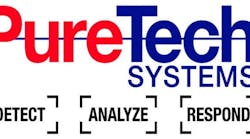Do you know how to make data come alive? Can you turn the vast amount of data available to you in your organization into meaningful stories that inform decisions and enable strategic change?
Many of us have sat through (or given) presentations where there is a slide with a bunch of numbers and text in a grid format – often accompanied by an apology by the presenter for the eye chart. What if there was a better way to present such valuable information?
A year ago, I attended a workshop offered by a local university entitled, Becoming a Visual Organization: The Power of Data Storytelling. It focused on the need to leverage business intelligence through data analytics and visualization tools – which became one of my next big projects for exploration.
The pursuit of business intelligence tools and processes not only moves us away from “static” data on a slide that is irrelevant the minute a meeting is over, but also provides access to real-time data both internally (for employees) and externally (for customers and vendors). On this journey, the need to have the right skillset would determine the project’s success.
Harnessing Big Data
Upon researching the business intelligence project through consultant interviews, webinars, and conferences, I discovered an astounding statistic in a Forbes article, entitled “Big Data: 20 Mind-Boggling Facts Everyone Must Read” – which said that “less than 0.5% of all data is ever analyzed and used. “
Just imagine the potential here – organizations are sitting on a gold mine of data that can be their differentiator and disrupt their industry to give them a much-needed competitive edge in a world where data is expected to available instantaneously. They just aren’t tapping it.
This is where business intelligence comes in: A picture is worth a thousand words, but the process to retrieve, organize and present the data is the secret sauce.
There is a big data science skillset market that may or may not be familiar to many organizational leaders. What is a data scientist? According to Google, it is someone who can analyze and interpret complex digital data. Basically, it’s the real smart folk who know how to code, create algorithms, know predictive analytics, and can explain the E.T.L. process. – then after all the heavy lifting is complete, create charts and graphs of the data through a visualization tool.
If you own or manage a company who invested in a business intelligence project recently, then your organization is staying relevant. You may have already retained your talent, or are beginning to explore the skillsets needed to elevate your plan to the next level of execution.
For some organizations, business intelligence can be what NetFlix did to television and movies or what Uber did to taxis. To learn more about the data analytics revolution and strategies for adding it to your strategic outlook, here are a few starting points:
- The books “2020 Vision,” by Stan Davis and Bill Davidson; and “B4B: How Technology and Big Data Are Reinventing the Customer-Supplier Relationship,” by Wood, Hewlin and Lah;
- On the web, check out a recent article from Simplilearn, “Data Science vs. Big Data vs. Data Analytics" (www.simplilearn.com/data-science-vs-big-data-vs-data-analytics-article) for guidance on what skills to look for and differentiation of the terms;
- Partner with a local university if they have a Masters of Analytics program (or similar);
- For analytics visualization tools, check out Tableau (www.tableau.com) or Power BI (http://powerbi.microsoft.com).
Chris Salazar-Mangrum is Senior IT Project Manager and Project Management Committee Member for PSA Security Network. Request more info about PSA at www.securityinfowatch.com/10214742.



